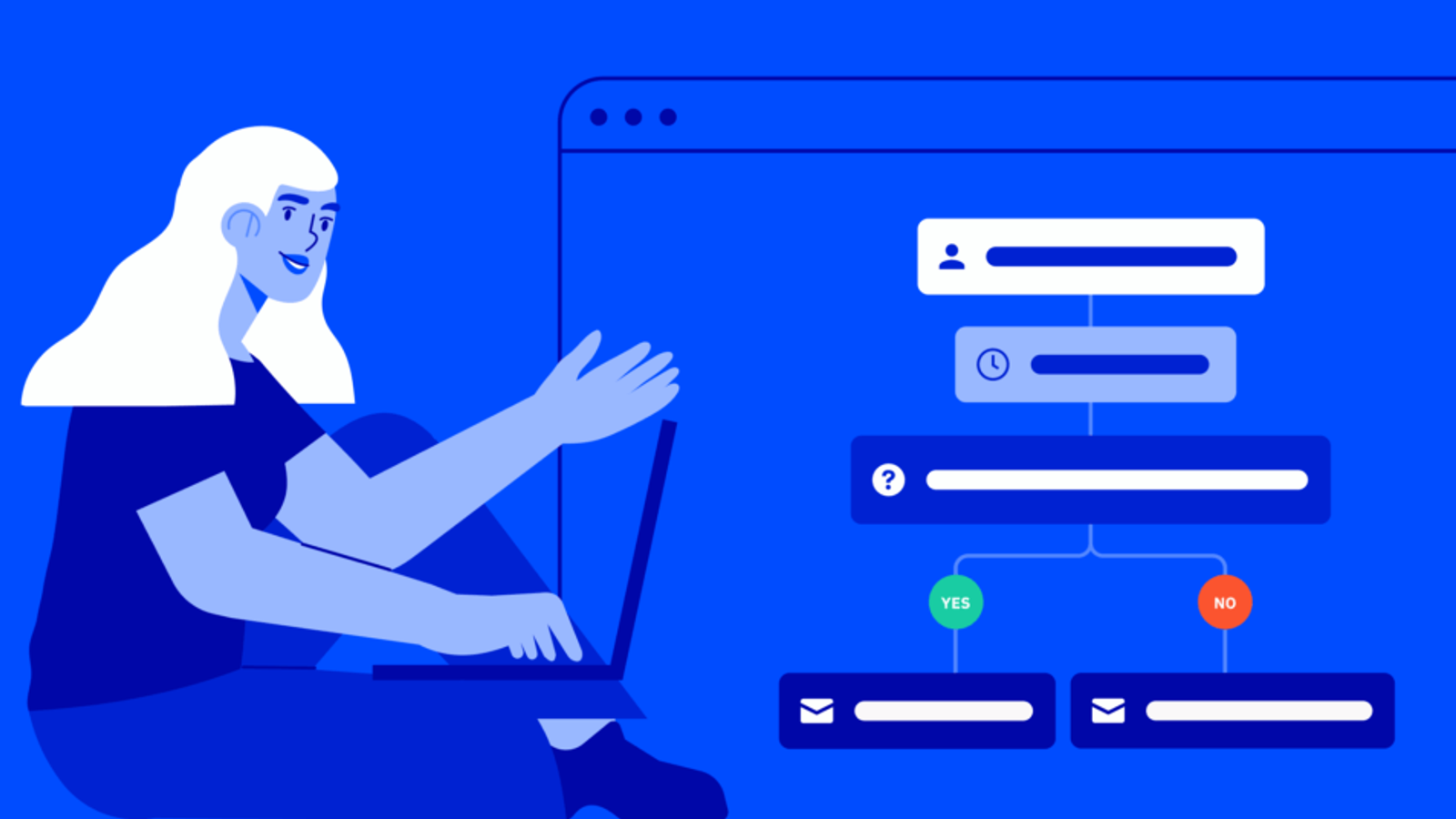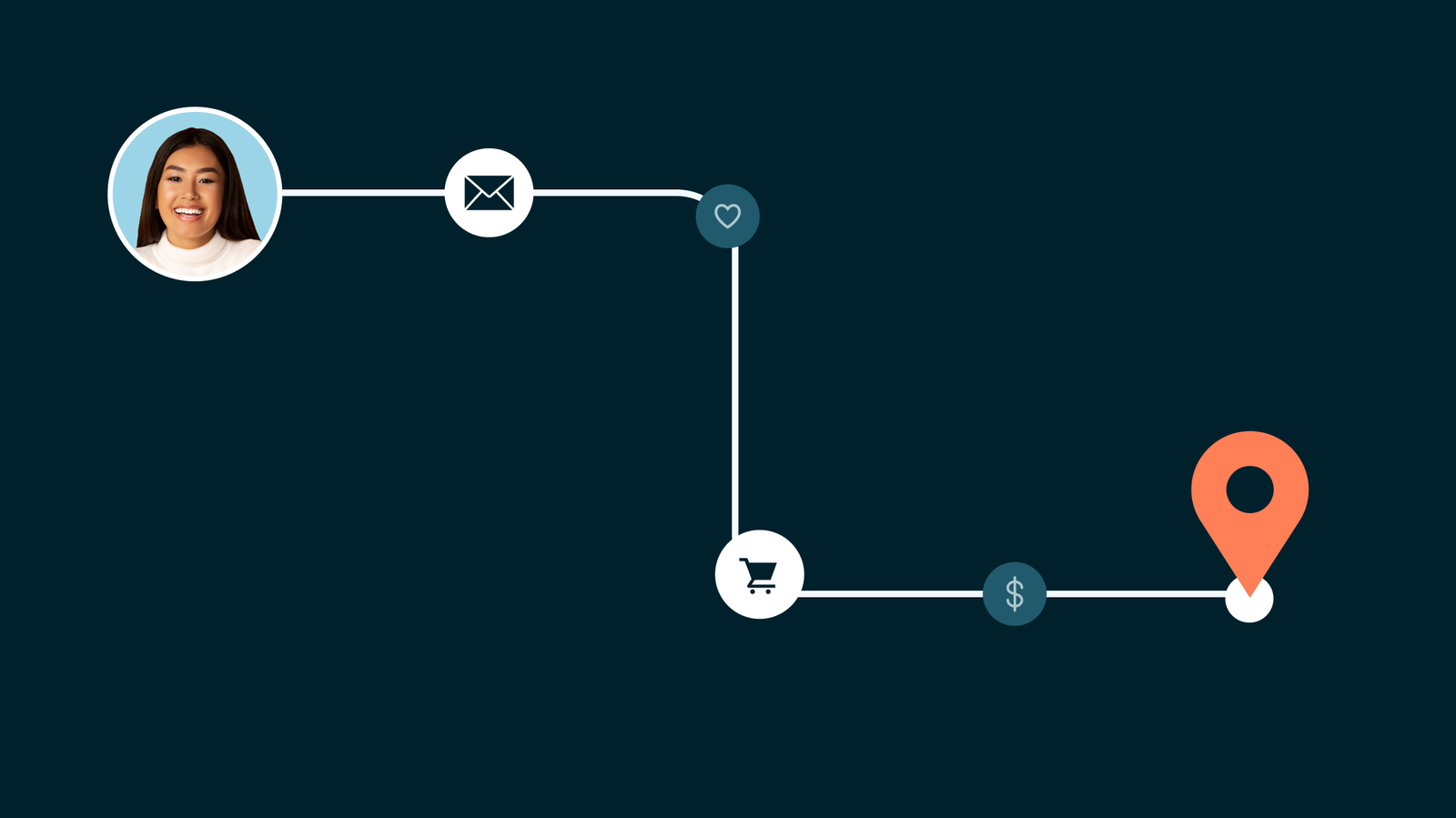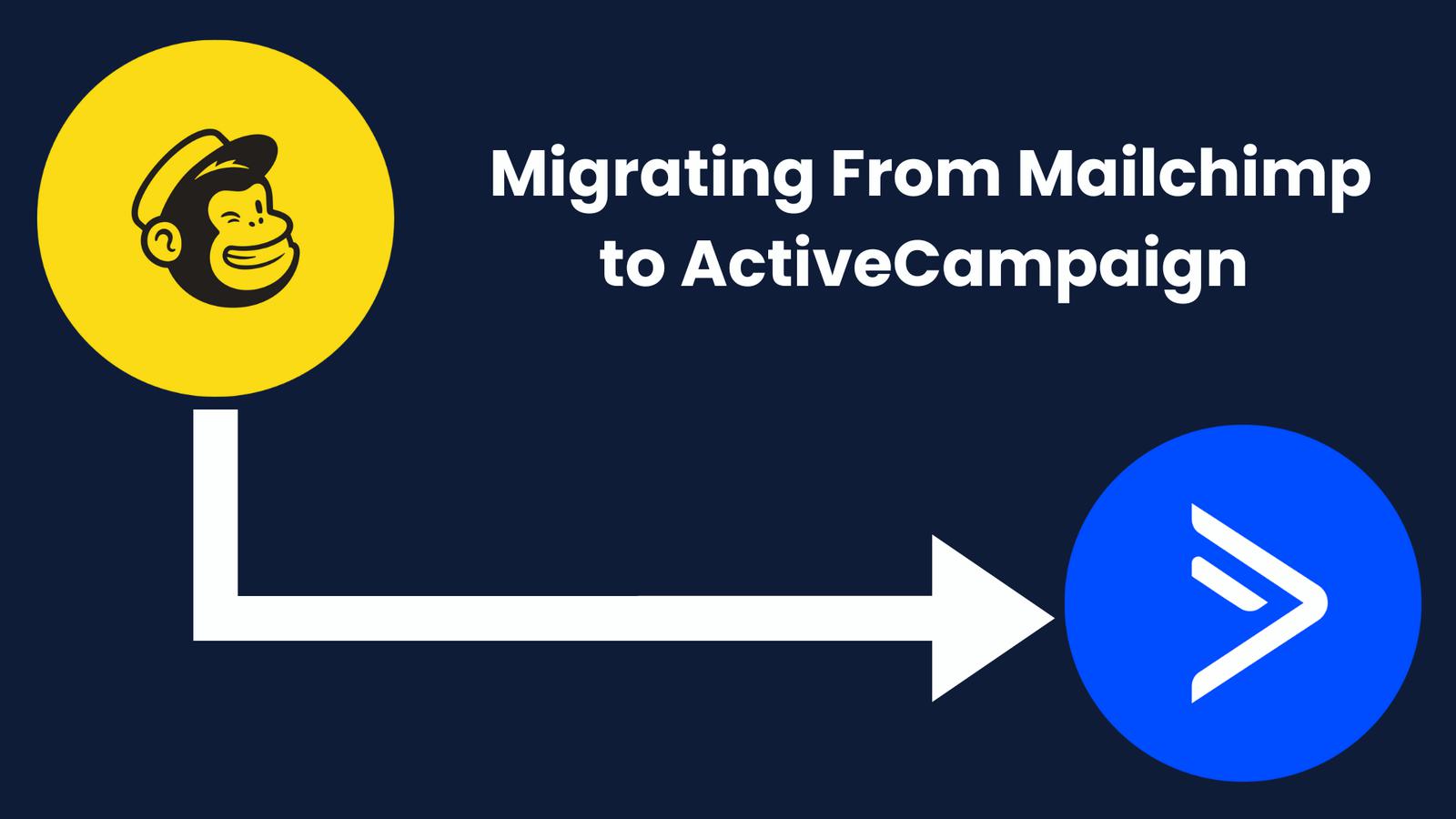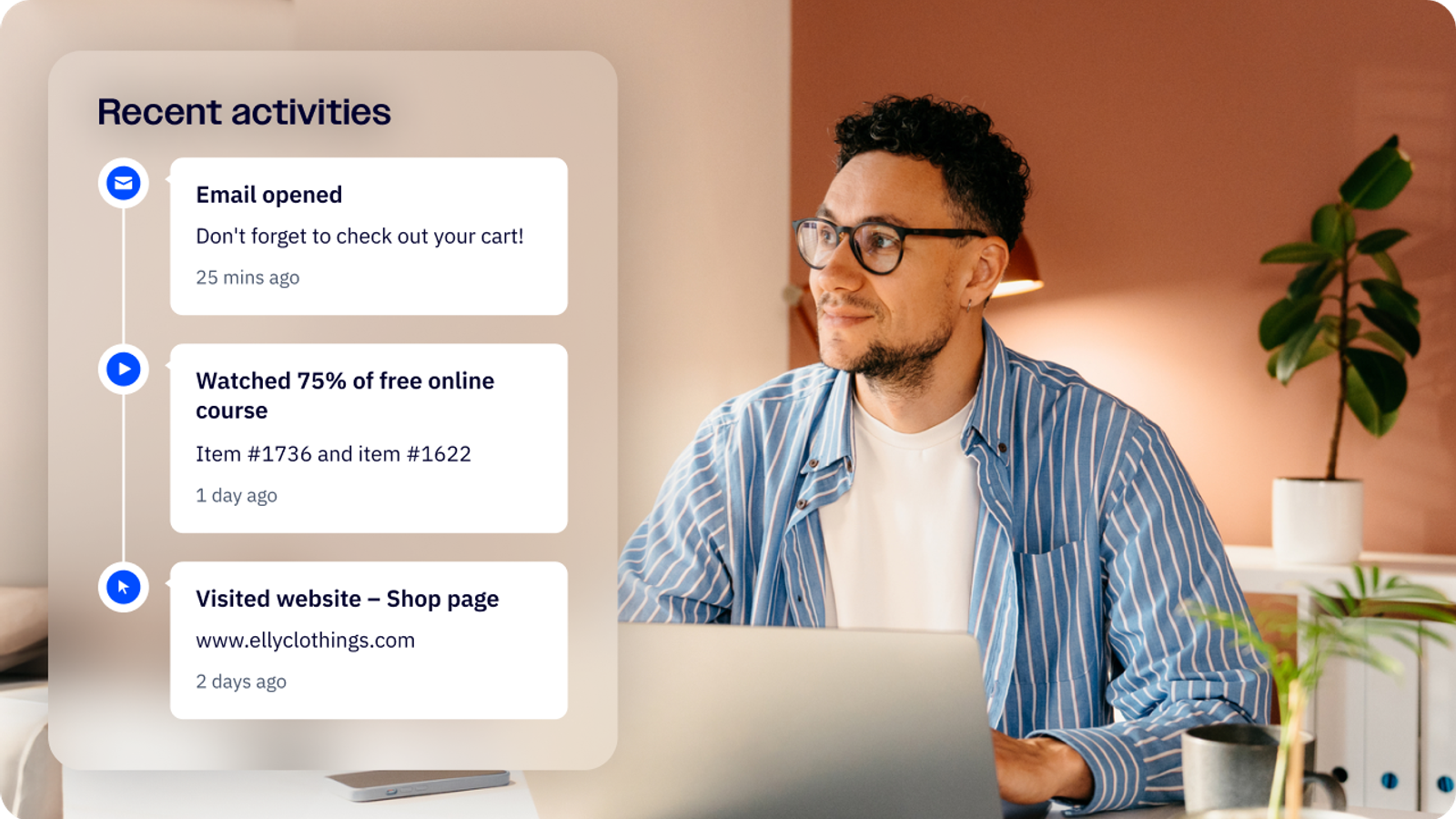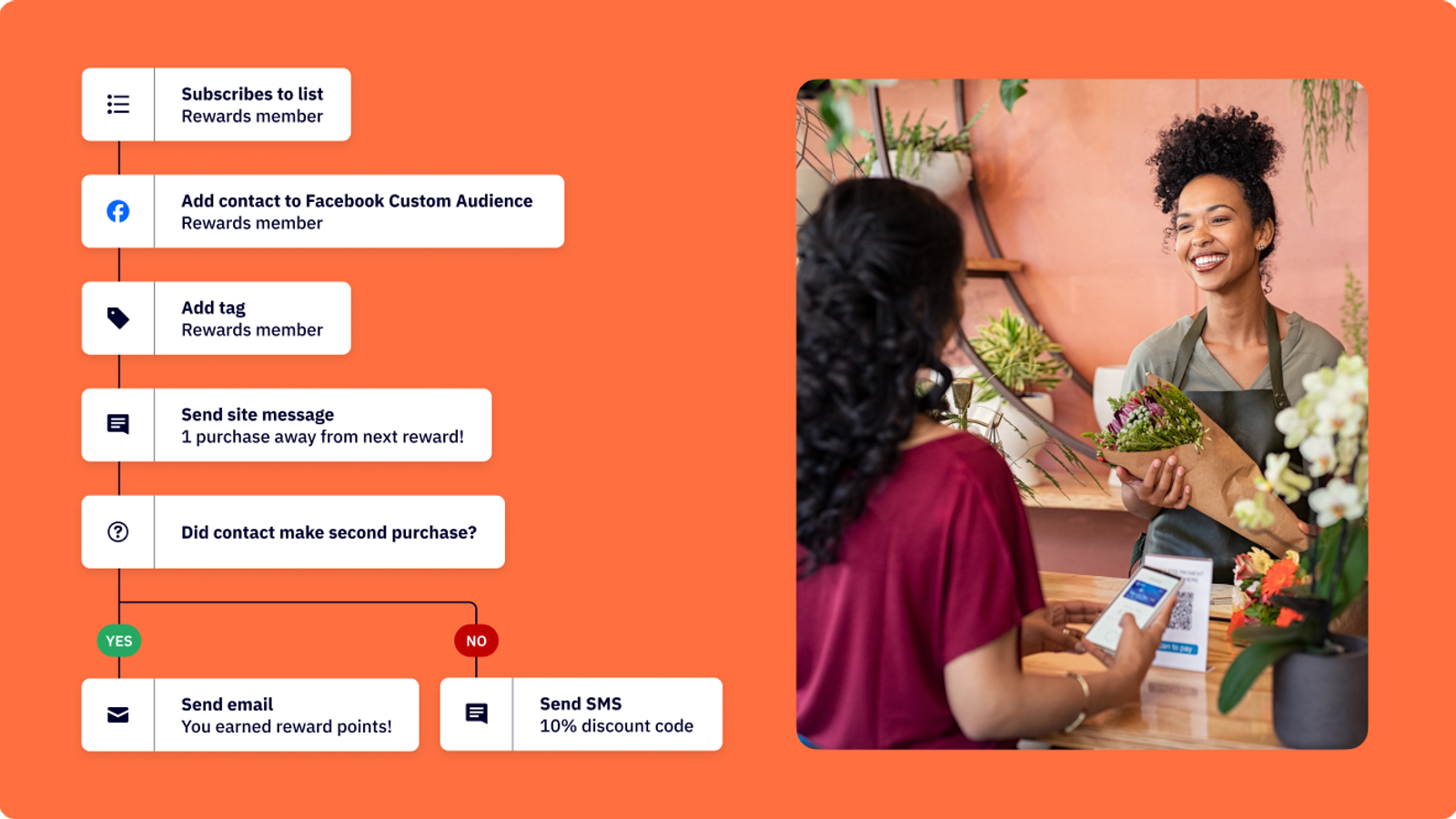For anyone who has paid attention to digital marketing over the past few years, one strategy stands out for its impact on reaching and engaging audiences: audience segmentation.
At its core, audience segmentation is the process of dividing a broad audience into smaller, more manageable groups based on shared characteristics. By understanding and catering to these distinct groups, content creators can deliver more targeted, relevant, and effective content.
Heads up: This post is part of our Content Creator series that delves into essential strategies that empower content creators – from those working independently to those creating content for large organizations and everyone in between. Discover all of the resources below.
So, why are we talking about audience segmentation in a series about content creators? It’s a topic that cannot be overstated. In a world where content is ubiquitous, standing out requires creativity and strategic thinking.
For content creators, this means moving beyond one-size-fits-all content to deliver personalized experiences that resonate with different audience segments. Whether you are a blogger, a YouTuber, a social media influencer, or a content marketer, understanding and implementing audience segmentation can transform your approach, increase your content’s impact, and ultimately drive more meaningful engagement with your audience.
What is audience segmentation?
Audience segmentation is a strategy crucial for content creators to maximize the impact of their work. It involves dividing a broad audience into subgroups based on shared characteristics or interests. It’s about recognizing that not all viewers, readers, or followers have the same preferences or behaviors and tailoring your approach to address these variances.
This allows for targeted and relevant content creation, ensuring the material resonates more clearly with each group.
Ways to segment an audience
- Demographic segmentation: This involves categorizing the audience based on demographic factors like age, gender, education, or income. For instance, the content that appeals to teenagers might differ significantly from what resonates with adults in their thirties.
- Behavioral segmentation: Here, the focus is on the audience’s behavior. This could include their purchasing habits, website browsing patterns, or engagement with previous content. Understanding these behaviors helps tailor content that aligns with their interests and interactions.
- Engagement level segmentation: Another approach is to segment the audience based on their engagement levels surrounding your content, such as emails sent or blog posts. This can range from highly engaged users who regularly interact with your content to passive viewers who seldom engage. A common use for this is to gauge potential customers and how likely they are to convert.
These segmentation strategies help content creators customize their approach, ensuring that their content is seen and felt by their audience, fostering a deeper connection and increased engagement.
Why is audience segmentation critical for content creators?
Understanding your audience's diverse needs is not only beneficial; it’s a strategic imperative for effective content creation. This is where audience segmentation becomes a game-changer.
Understanding diverse audience needs
Every audience is a mosaic of different interests, backgrounds, and preferences. By segmenting your audience, you gain deeper insights into these varying needs. This understanding is crucial because it allows you to create content that speaks directly to specific groups within your audience. Whether catering to different age groups, cultural backgrounds, or lifestyle preferences, segmentation ensures your content is relevant and engaging.
Targeted and effective content
- Improved engagement: Tailored content resulting from segmentation is more likely to resonate with your audience, leading to higher engagement rates. For instance, a video that addresses the specific concerns of new parents will likely be more engaging to them than a generic parenting video.
- Higher conversion rates: When your content aligns with the audience's specific interests or needs, it increases the likelihood of conversions. For example, promoting baby products in content specifically segmented for new parents.
- Building loyalty: Segmented content can also foster a sense of connection and loyalty. When your audience feels that your content consistently meets their unique needs, they are more likely to stay engaged over time.
Segmentation is not just about dividing an audience; it’s about creating a personalized experience for different groups. It acknowledges and respects the diversity within your audience, making your content more relevant, respectful, and inclusive.
How content creators can use segmentation to grow
Audience segmentation can be a powerful tool for content creators, allowing them to grow their reach and engagement. Different types of content creators can employ segmentation in unique ways to connect more deeply with their audience.
Solopreneurs
- Personalized messaging: Solopreneurs can use segmentation to deliver personalized messages that resonate with different audience groups. This can be based on consumer behavior, purchase history, or specific interests.
- Niche targeting: Solopreneurs often operate within specific niches, making segmentation crucial for targeting content to audience segments most likely to engage and convert.
Streamers/YouTubers
- Content preferences: Streamers and YouTubers can segment their audience based on content preferences and viewing habits, tailoring their streaming schedule or content type accordingly.
- Demographic insights: Understanding the demographics of their audience can help in creating content that appeals to specific age groups, regions, or interests.
Content marketers/Copywriters/Bloggers
- Audience interests: Content marketers can use segmentation to align their blogs or copy with the interests of different audience segments, enhancing relevancy and engagement.
- Behavioral segmentation: Tracking user interaction with previous content can help guide the creation of more effective marketing strategies and blog topics.
Social media influencers
- Engagement patterns: Influencers can segment their audience based on engagement patterns to understand which types of content drive more interaction.
- Brand alignment: For brand collaborations, influencers can segment their audience to determine which products or services would be most relevant and appealing.
Podcasters
- Listening habits: Podcasters can segment their audience based on listening habits, such as preferred topics or podcast lengths, to tailor their content for different listener segments.
- Subscriber insights: Analyzing subscriber data can help podcasters create episodes that address specific audience interests or concerns.
Educational content creators
- Learning preferences: Educational content creators can customize their educational content by segmenting their audience based on learning preferences, such as visual versus auditory learners.
- Skill Level segmentation: Segmenting audiences based on skill levels or knowledge areas allows for the creation of tailored educational content that meets specific learning needs.
Each type of content creator has unique opportunities to use audience segmentation to enhance their content strategy, engage their audience more effectively, and ultimately grow their presence and impact.
Implementing content segmentation
Content segmentation can initially seem daunting, but by following a systematic approach, content creators can effectively categorize their audience to improve engagement and content relevance.
General strategy for segmenting your audience
- Identify your goals: Determine what you aim to achieve with segmentation. Is it increasing engagement, boosting conversions, or something else?
- Gather data: Collect data on your audience. This is generally done using customer relationship management software (CRM) and can include demographics, behavioral data, preferences, or anything else you can collect through analytics tools, surveys, and social media insights.
- Analyze and categorize: Analyze the data to identify patterns and group your audience into segments based on common interests, behavior, or demographics.
- Create tailored content: Develop content tailored to the needs and preferences of each segment.
- Test and refine: Use A/B testing to see how different segments respond to various content types. Refine your strategy based on the results.
Segmentation in ActiveCampaign
ActiveCampaign offers tools that make segmenting your audience simpler and more effective. These include marketing automation, CMS, and email marketing, all in one (as well as many other features). Let’s take a look at how segmentation works in the ActiveCampaign platform.
Creating segments isn't difficult once you have your ActiveCampaign setup and your subscriber data imported. While there are a few different ways to go about it, such as creating them on the fly while sending a campaign, this section will cover creating them at the “list” level.
You can access the segmentation tool by clicking on Contacts > Lists and finding the list you want to segment if you have more than one.

Next, click the dropdown arrow at the far right next to “Import contacts” and select “Segments.” A “New Segment” button will appear under your list name. This is also where your segments will appear after they’ve been created.

A “New Segment” button will appear under your list name. This is also where your segments will appear after they’ve been created.
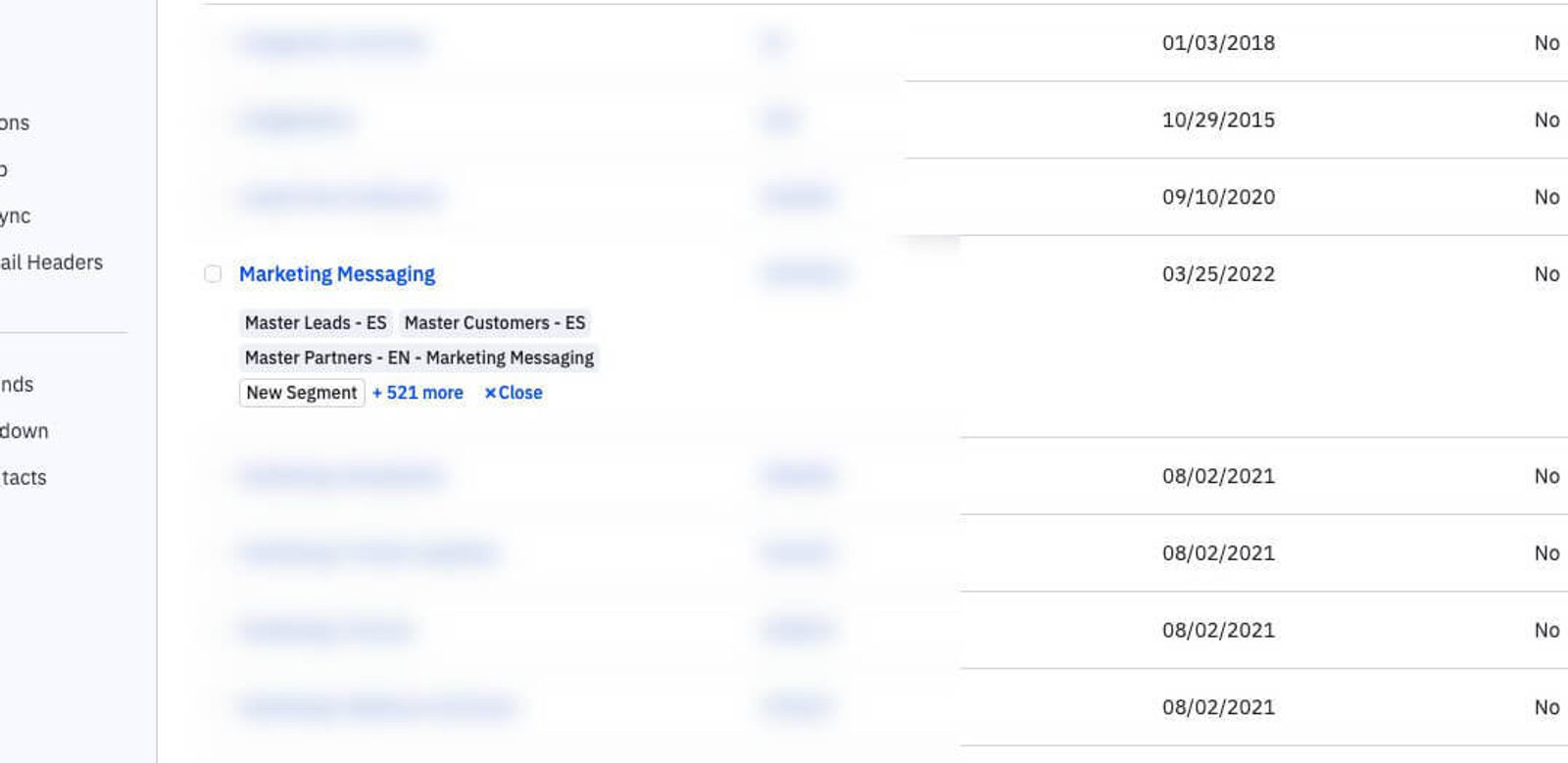
Give your new segment a name and click “Create segment.”
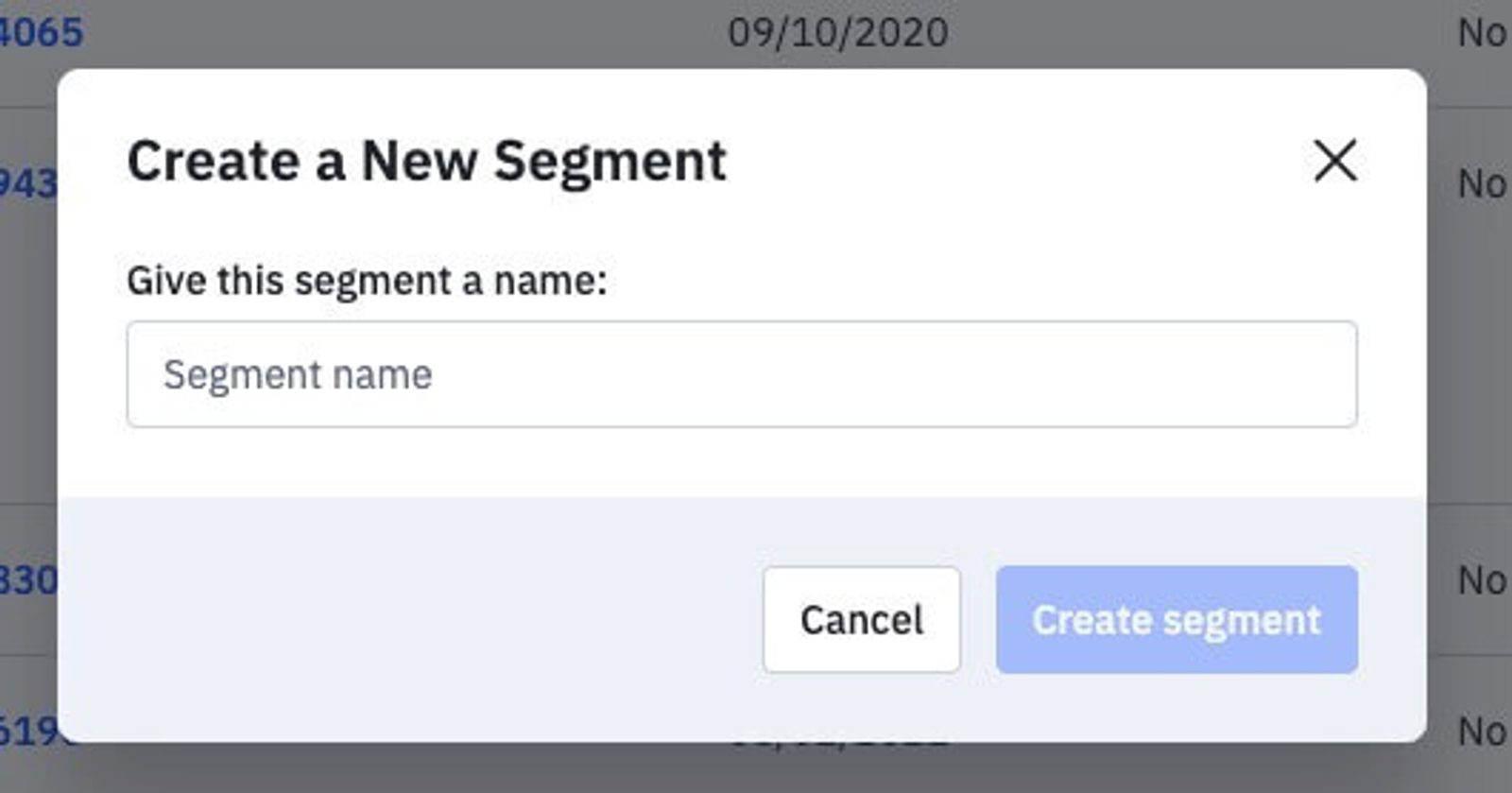
Once you’re in the List Segments tool, use the drop-down boxes to select the conditions you want to segment by. Any data you’ve collected can be used here to segment your audience!
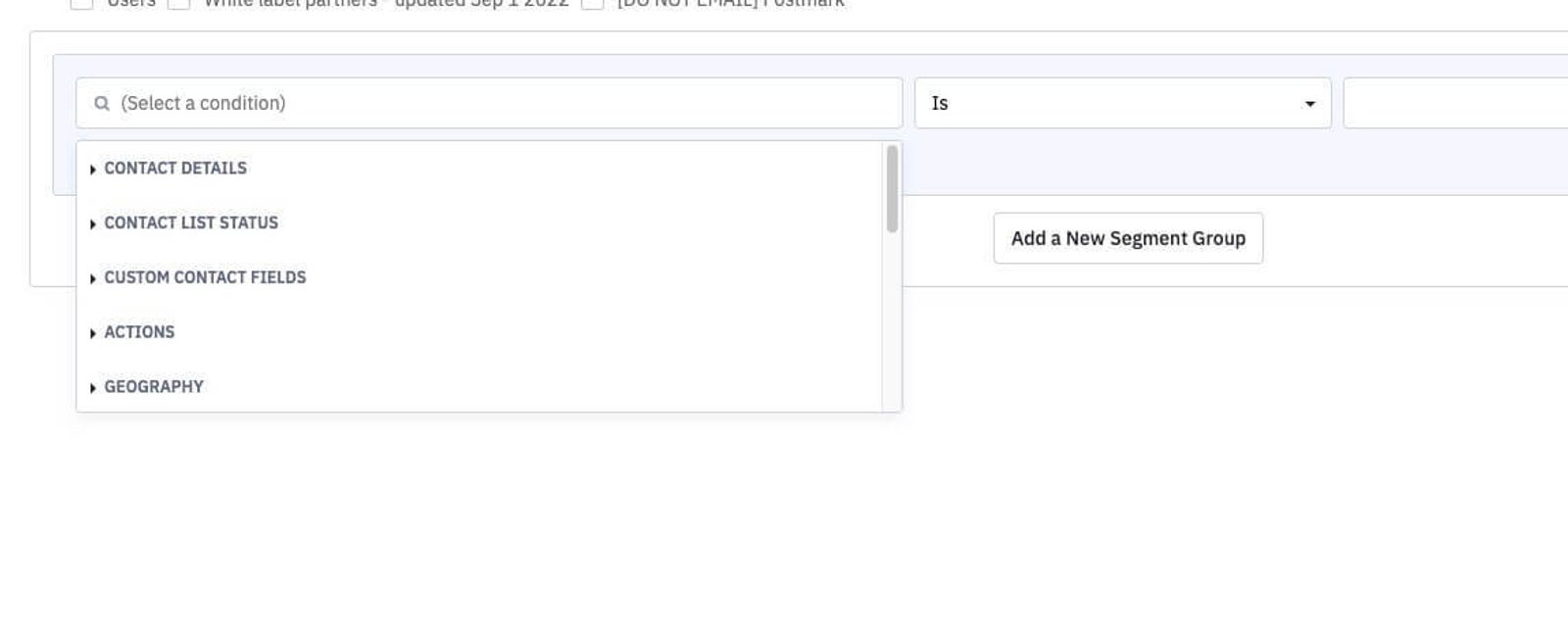
Feel free to get creative here! There are many different ways to segment your audience, and ActiveCampaign’s tool helps you really dig deep into the data. Easily add “and/or” conditions, “is/is not” conditions, and more.

After you’re happy with your new segment, don’t forget to save your work and review it! You can see your new segment anytime by clicking the “View Contacts” button.
Bonus tip: Not sure where to start with your new audience segment? ActiveCampaign has a dynamic content feature that allows you to create dynamic content that changes based on the viewer's segment. Even better, if you use it within automations, it will adapt to the preferences of each segment automatically!
This guide is just the foundation for content creators to implement audience segmentation into their content strategy. Don’t be afraid to jump in and get creative. The possibilities are endless when you combine segmentation, automation, and dynamic content.
Best practices for content segmentation
When done correctly, content segmentation can significantly enhance your content strategy. Here are some best practices for optimizing your segmentation efforts.
Collecting relevant data
Collecting relevant data about your audience is the cornerstone of effective audience segmentation. This first crucial step involves a deep dive into various sources of audience information. Whether through sign-up forms, website analytics, or social media interactions, each piece of data offers a glimpse into who your audience is and what they care about. The more comprehensive your data collection, the more accurately you can segment your audience.
Once you have this data, the next step is to make sense of it. This is where your creativity and understanding of your audience come into play. Analyzing the data allows you to create meaningful segments that truly resonate with your content strategy. For instance, if you notice a significant portion of your audience is interested in a particular topic, you can create a segment specifically catering to this interest.
Remember, the key is to start with foundational data like demographics and interests and then explore deeper layers of engagement and behavior. The more detailed your segments are, the more personalized and effective your content will become.
Regular segment updates
In the world of content creation, change is the only constant. As such, it is vital to ensure your audience segments remain relevant over time. Regularly revisiting and updating your segments helps align your content strategy with your audience's evolving interests and behaviors. This doesn't mean a complete overhaul with each review but rather a fine-tuning process based on the latest audience data.
Staying agile with your segmentation strategy means being responsive to new trends, shifts in audience preferences, and emerging patterns in engagement. It's about understanding that a highly responsive audience segment a few months ago might need a different approach now. By keeping your segments fresh and up-to-date, you maintain the effectiveness of your content and its appeal to your audience.
Testing and personalization
Testing and personalization go hand in hand with audience segmentation. Utilizing A/B testing allows you to gauge the effectiveness of different content strategies across your audience segments. This could mean experimenting with various content formats, messaging styles, or call-to-action placements. The goal is to find what resonates best with each segment, allowing for a more personalized content approach.
Personalization, however, extends beyond just tweaking content based on testing results. It involves a deeper understanding of each segment's unique needs and crafting content that feels almost tailor-made for them. This could be as simple as changing the tone to match the preferences of a specific age group or as complex as customizing the entire content experience based on user behavior. The more personalized your content, the higher the likelihood of it striking a chord with your audience.
Monitoring engagement and respecting privacy
Keeping a close eye on how each segment interacts with your content is crucial for evaluating the effectiveness of your segmentation. This involves monitoring key metrics like click-through rates, engagement levels, and conversion rates. These metrics provide invaluable insights into what's working and what's not, allowing for data-driven decisions in content strategy.
However, respecting your audience's privacy is paramount in the pursuit of personalization. Ensure your data collection and segmentation practices comply with privacy regulations and uphold ethical standards. Balancing the drive for personalization with the responsibility of privacy is key to building and maintaining trust with your audience.
Incorporating feedback
Incorporating customer feedback into your segmentation strategy adds another layer of depth to your content personalization efforts. Actively seeking out and listening to what your audience has to say can reveal gaps in your segmentation or highlight new opportunities for content personalization.
Whether through surveys, comment sections, or direct interactions, every piece of feedback is an opportunity to refine your approach. It's a dialogue that helps you align your content more closely with your audience's evolving needs and preferences, ensuring that your segmentation strategy remains effective and your content continues to resonate.
Common pitfalls to avoid in audience segmentation
While audience segmentation is a powerful tool for content creators, certain pitfalls can hinder its effectiveness. In this section, we'll explore some common mistakes to avoid, ensuring your segmentation strategy is both efficient and impactful. Let's delve into these challenges and how to navigate them successfully.
Not paying attention to list hygiene
List hygiene in email marketing refers to regularly cleaning and maintaining your email subscriber list to ensure it remains accurate, up-to-date, and free of inactive or invalid email addresses. Ignoring list hygiene is a common pitfall in audience segmentation. Regular cleaning of your email list or subscriber base is crucial, and failing to maintain list hygiene can lead to lower engagement rates and potentially harm your sender reputation.
Over-segmentation
Creating too many audience segments can lead to a diluted message and overly complex email campaigns. While tailoring your content is important, overcomplicating the segmentation process can be counterproductive. Focus on key differentiators in your audience without splitting them into too many small groups. Merging similar segments based on primary audience characteristics can help streamline your marketing efforts while maintaining effective personalization.
Neglecting persona development
Another common pitfall is not investing enough time in developing detailed buyer personas. Effective segmentation relies on a deep understanding of your audience, and personas are instrumental in achieving this. Use data-driven methods to build comprehensive personas that truly represent your audience segments. This means delving into analytics, market research, and feedback to create personas that guide your segmentation strategy effectively.
Ignoring the buyer’s journey
Failing to consider different stages of the buyer's journey can result in delivering content that's irrelevant to certain customer segments. Each stage has different content needs and preferences, from awareness to decision. Tailoring your content to match each stage of this journey is essential for maintaining engagement and guiding your audience smoothly through the conversion funnel.
Avoiding these pitfalls is as important as implementing the best practices in audience segmentation. It ensures that your segmentation strategy is effective, sustainable, and aligned with your audience's needs and behaviors.
The future of audience segmentation in content creation
As we look towards the future of content creation, the importance of audience segmentation continues to stand at the forefront. The ability to deliver relevant, targeted content is not just a luxury—it’s a necessity. The future will likely see even greater emphasis on understanding and catering to niche segments, as audiences increasingly expect content that resonates with their specific interests and needs.
Advancements in technology and data analytics drive this trend towards more refined segmentation, enabling content creators to gain deeper insights into their audience's preferences and behaviors. As these tools evolve, so does the potential for even more precise and effective segmentation. The future of audience segmentation promises a landscape where content creators can connect with their audience in increasingly meaningful ways, creating content experiences that are not just seen, but truly felt.
Changing platforms and content consumption habits
The digital world is constantly evolving, and with it, the platforms for content delivery are undergoing significant changes. As new platforms like TikTok rise in popularity, offering short-form video content, the strategies for audience segmentation need to adapt. Unlike the more traditional, long-form content on platforms like WordPress or YouTube, these newer platforms demand different approaches to segmentation. For instance, success on TikTok might hinge on understanding the nuances of viral trends or the preferences of younger demographics.
Moreover, these platforms continue to enhance their analytics and segmentation tools. This evolution gives content creators more power to understand their audience and segment them more effectively. Enhanced tools mean more detailed insights into audience behaviors and preferences, allowing for content more aligned with what viewers seek. As these platforms grow, they're offering increasingly sophisticated ways for creators to dissect their audience data and tailor content accordingly.
Rise of interactive and immersive content
Interactive and immersive content, particularly AR and VR, is beginning to change the landscape of audience engagement and segmentation. This type of content offers new data points—like interaction patterns and engagement depth—that can provide insights into audience preferences. For instance, the way an audience interacts with a VR experience can reveal their interest levels and engagement styles.
These technologies are not just altering how content is consumed; they're reshaping how it's segmented. They offer opportunities for content creators to engage with their audiences in new and more meaningful ways. As AR and VR technologies develop, they will likely open up novel avenues for segmentation based on how users interact with immersive content. This could range from the types of virtual environments they prefer to how they interact with different elements within an AR experience.
Incorporation of big data and analytics
The advent of big data and advanced analytics tools has revolutionized audience segmentation in content creation. These technologies allow for more granular and sophisticated segmentation by providing deeper insights into audience behaviors and preferences. Big data analytics can process vast amounts of data to uncover patterns and trends that were previously undetectable, enabling content creators to fine-tune their segments with remarkable precision.
Predictive analytics is another area where big data is making a significant impact. Predictive models can forecast future audience behaviors and trends by analyzing current and historical data. This foresight is invaluable for content creators, as it enables them to anticipate their audience's needs and interests and tailor their content strategy accordingly. As these analytical tools continue to evolve, they promise to make audience segmentation even more dynamic and impactful.
Impact of social media algorithms
Social media algorithms play a crucial role in how content reaches and engages audiences, directly influencing content creators' segmentation strategies. These algorithms determine what content is shown to whom based on various factors like past interactions, engagement levels, and user preferences. As a result, understanding and adapting to these algorithms is essential for effective audience segmentation.
Content creators must continuously evolve their strategies to align with how these algorithms segment and prioritize content. This might involve creating content that naturally encourages engagement, such as interactive posts or content that sparks conversation. By staying informed about how social media platforms update their algorithms, content creators can better segment their audience and optimize their content for maximum reach and engagement.
Privacy concerns and data regulations
In the era of stringent privacy laws like GDPR and CCPA, content creators face the challenge of aligning their segmentation strategies with new privacy norms. These regulations require a more cautious approach to data collection and segmentation. Content creators must ensure their audience segmentation processes comply with these laws, making transparency and consent key factors. This situation demands innovative strategies to collect and use data in a way that respects audience privacy while still providing valuable insights for effective segmentation.
Personalization and hyper-personalization
The concept of personalization in content creation is evolving, moving beyond basic techniques to a more nuanced approach known as hyper-personalization. Advancements in technology enable content creators to tailor content to individual preferences and behaviors at an unprecedented level. This section serves as a precursor to the next blog, delving into how these technological advancements enable creators to offer highly personalized content experiences, enhancing relevance and engagement. Hyper-personalization represents the future of audience segmentation, where content is not just tailored to groups but to individual preferences and behaviors.
Advanced AI-driven segmentation & predictive modeling
Artificial Intelligence (AI) is playing a transformative role in audience segmentation. With its advanced data analysis capabilities, AI is not just segmenting audiences based on existing data but also predicting future trends and behaviors. This ability to anticipate and adapt to audience preferences ahead of time is revolutionizing content strategy. AI's predictive modeling empowers content creators to be proactive, ensuring their content remains relevant and engaging. This advanced level of segmentation driven by AI is setting a new standard for how content is tailored and delivered to different audience segments.
Automated content adaptation and ethical considerations
AI's influence extends to automating content adaptation for various audience segments. This means content can be dynamically altered to suit different segments based on real-time data and audience interactions. However, this powerful tool comes with a responsibility to use AI ethically. It's essential for content creators to be aware of and actively prevent biases in audience targeting. Ensuring ethical use of AI in content segmentation not only maintains audience trust but also upholds the integrity of the content creation process.
As we look ahead to the future of audience segmentation in content creation, it's clear that we are on the cusp of a new era defined by sophisticated technologies and evolving marketing campaigns. The possibilities are vast and exciting, from AI-driven predictive modeling to ethically guided content adaptation. These advancements promise to enhance the accuracy and effectiveness of segmentation and usher in new creative possibilities for content creators.
The journey ahead is filled with opportunities to connect with audiences in more meaningful and personal ways, setting the stage for the next chapter in content creation. This ongoing evolution will undoubtedly shape how we approach content and engage with our audience, promising an intriguing path forward for all content creators.
Segmentation is the key
As we wrap up our exploration of audience segmentation in content creation, the key takeaway is clear: understanding and effectively implementing audience segmentation is more than a strategy; it's an essential component of successful content creation. From the basics of gathering relevant data to navigating the complex waters of AI-driven predictive modeling and the ethical use of technology, audience segmentation is about creating content that resonates on a deeper level with your audience.
For content creators, the message is straightforward: embrace the power of audience segmentation to reach your audience more effectively and engage with them in a meaningful and impactful way. As the digital landscape continues to evolve, staying ahead means continuously adapting and refining your segmentation strategies.
And, if you’d like to give ActiveCampaign a test run, click here for a free trial.

